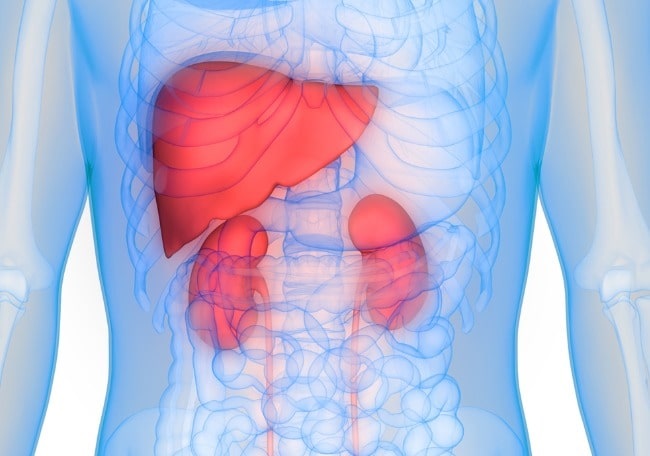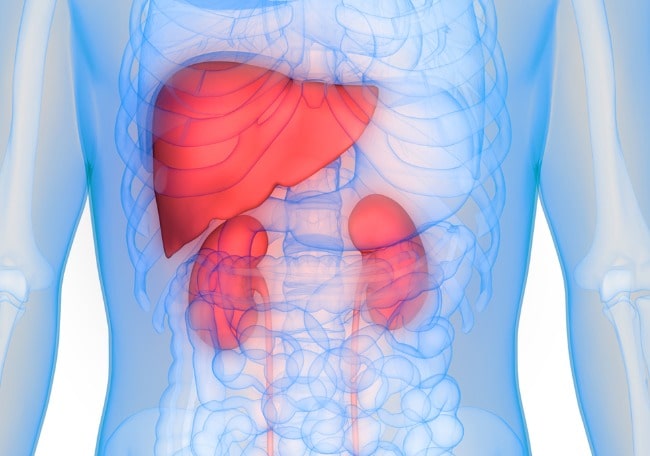Ascitis, peritonitis espontánea y síndrome hepatorrenal

1. Biggins SW, Angeli P, Garcia-Tsao G, et al. Diagnosis, evaluation, and management of ascites, spontaneous bacterial peritonitis and hepatorenal syndrome: 2021 practice guidance by the American Association for the Study of Liver Diseases. Hepatology 2021; 74(2):1014–1048. doi:10.1002/hep.31884
2. Pant C, Jani BS, Desai M, et al. Hepatorenal syndrome in hospitalized patients with chronic liver disease: results from the Nationwide Inpatient Sample 2002–2012. J Investig Med 2016; 64:33–38. doi:10.1136/jim-d-15-00181
3. Runyon BA, Montano AA, Akriviadis EA, Antillon MR, Irving MA, McHutchison JG. The serum-ascites albumin gradient is superior to the exudate-transudate concept in the differential diagnosis of ascites. Ann Intern Med 1992; 117(3):215–220. doi:10.7326/0003-4819-117-3-215
4. Hsu WF, Yu SH, Lin JT, et al. Renal effects of angiotensin-converting enzyme inhibitors and angiotensin receptor blockers in patients with liver cirrhosis: a nationwide cohort study. Gastroenterol Res Pract 2019; 2019:1743290. doi:10.1155/2019/1743290
5. Moore KP, Wong F, Gines P, et al. The management of ascites in cirrhosis: report on the consensus conference of the International Ascites Club. Hepatology 2003; 38(1):258–266. doi:10.1053/jhep.2003.50315
6. Moreau R, Delegue P, Pessione F, et al. Clinical characteristics and outcome of patients with cirrhosis and refractory ascites. Liver Int 2004; 24(5):457–464. doi:10.1111/j.1478-3231.2004.0991.x
7. Salerno F, Guevara M, Bernardi M, et al. Refractory ascites: pathogenesis, defi nition and therapy of a severe complication in patients with cirrhosis [published correction appears in Liver Int 2010; 30(8):1244]. Liver Int 2010; 30(7):937–947. doi:10.1111/j.1478-3231.2010.02272.
8. Gines P, Arroyo V, Quintero E, et al. Comparison of paracentesis and diuretics in the treatment of cirrhotics with tense ascites. Results of a randomized study. Gastroenterology 1987; 93:234–241. doi:10.1016/0016-5085(87)91007-9
9. Bernardi M, Carceni P, Navickis RJ, Wilkes MM. Albumin infusion in patients undergoing large-volume paracentesis: a meta-analysis of randomized trials. Hepatology 2012; 55(4):1172–1181. doi:10.1002/hep.24786
10. Ruiz-del-Arbol L, Monescillo A, Jimenéz W, Garcia-Plaza A, Arroyo V, Rodés J. Paracentesis-induced circulatory dysfunction: mechanism and effect on hepatic hemodynamics in cirrhosis. Gastroenterology 1997; 113(2):579–586. doi:10.1053/gast.1997.v113.pm9247479
11. Tan HK, James PD, Wong F. Albumin may prevent the morbidity of paracentesis-induced circulatory dysfunction in cirrhosis and refractory ascites: a pilot study. Dig Dis Sci 2016; 61(10):3084–3092. doi:10.1007/s10620-016-4140-3
12. Runyon BA; AASLD. Introduction to the revised American Association for the Study of Liver Diseases Practice guideline management of adult patients with ascites due to cirrhosis 2012. Hepatology 2013; 57(4):1651–1653. doi:10.1002/hep.26359
13. Sersté T, Melot C, Francoz C, et al. Deleterious effects of beta-blockers on survival in patients with cirrhosis and refractory ascites. Hepatology 2010; 52(3):1017–1022. doi:10.1002/hep.23775
14. Sersté T, Francoz C, Durand F, et al. Beta-blockers cause paracentesis- induced circulatory dysfunction in patients with cirrhosis and refractory ascites: a cross-over study. J Hepatol 2011; 55(4):794–799. doi:10.1016/j.jhep.2011.01.034
15. Reiberger T, Mandorfer M. Beta adrenergic blockade and decompensated cirrhosis. J Hepatol 2017; 66(4):849–859. doi:10.1016/j.jhep.2016.11.001
16. Tan HK, James PD, Sniderman KW, Wong F. Long-term clinical outcome of patients with cirrhosis and refractory ascites treated with transjugular intrahepatic portosystemic shunt insertion. J Gastroenterol Hepatol 2015; 30(2):389–395. doi:10.1111/jgh.12725
17. Bureau C, Thabut D, Oberti F, et al. Transjugular intrahepatic portosystemic shunts with covered stents increase transplant-free survival of patients with cirrhosis and recurrent ascites [published correction appears in Gastroenterology 2017; 153(3):870]. Gastroenterology 2017; 152(1):157–163. doi:10.1053/j.gastro.2016.09.016
18. Angermayr B, Cejna M, Karnel F, et al. Child-Pugh versus MELD score in predicting survival in patients undergoing transjugular intrahepatic portosystemic shunt. Gut 2003; 52(6):879–885. doi:10.1136/gut.52.6.879
Comentarios
Para ver los comentarios de sus colegas o para expresar su opinión debe ingresar con su cuenta de IntraMed.







